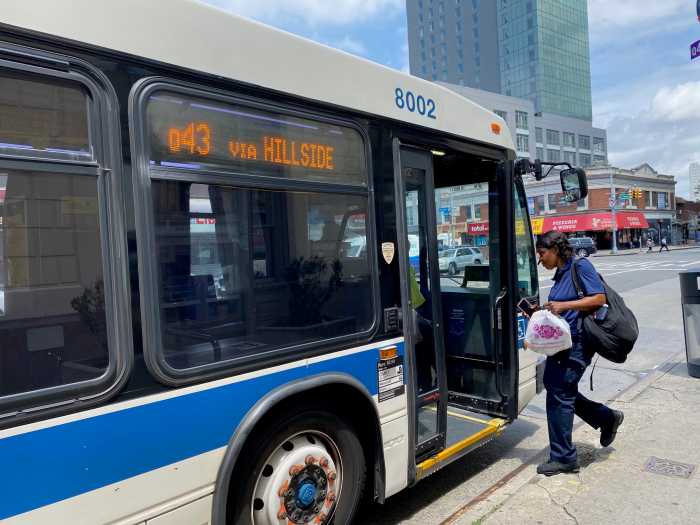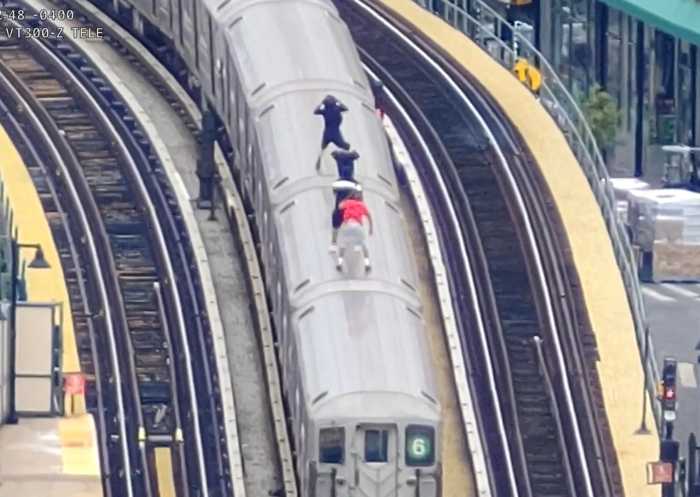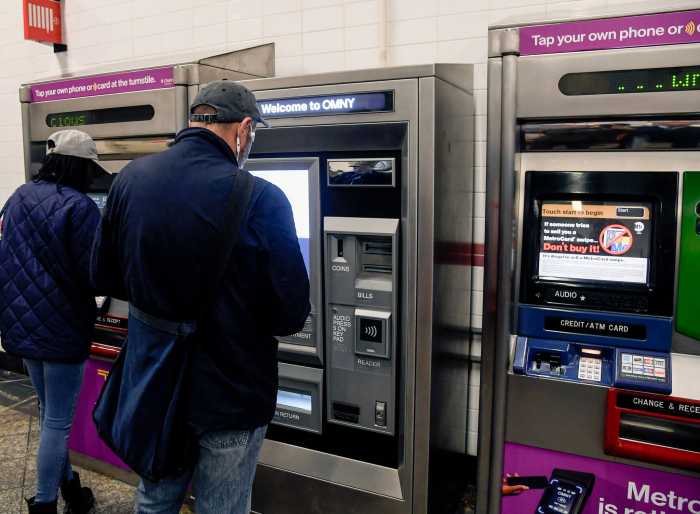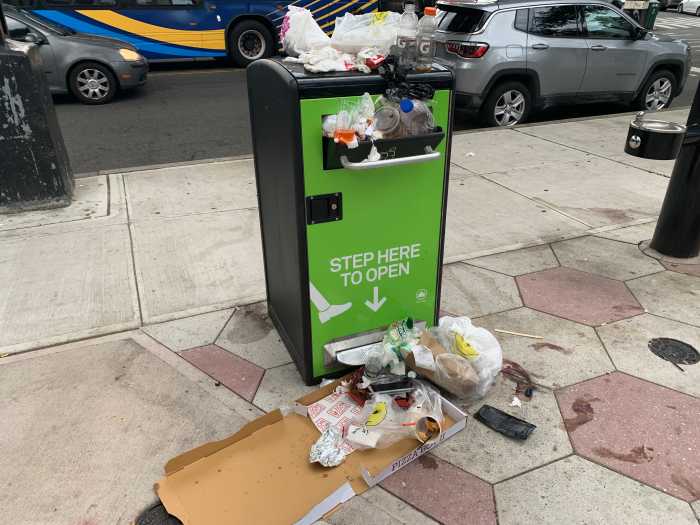
The MTA’s bus action plan must prioritize areas of the city not served by the subway, elected officials say.
City Comptroller Scott Stringer and Queens Assemblywoman Nily Rozic recently caught a ride on the Q34 to praise elements of the plan, announced last week, and to highlight issues with local service during the trip between Hillcrest and Flushing.
“I don’t have a single subway stop in my entire assembly district. So we’re wholly dependent on bus service,” said Rozic. “It’s not unlike southeast Brooklyn or the outer reaches of the Bronx — that’s where [bus improvements] are really critical for New Yorkers.”
Rozic said the Q34 and Q25, which serve as key connections to several schools, including Queens College, are typically unreliable, slow and too often arrive at stops several at a time — bunching that creates larger gaps in service. She said she supported items in the plan like all-door boarding, transit signal priority at intersections, route redesigns and increased off-peak service for the routes in her district.
Only 38 percent of Q25 buses and 45 percent of Q34 buses arrive at what the MTA considers “on time” — between one minute early and five minutes late — and one out of every seven Q25 buses arrives bunched next to another, according to data from the Bus Turnaround Coalition.
In addition to the poor service, commuters are left with few choices. The Q25 has experienced an increase in ridership, from 17,336 average daily riders in 2011 to 20,083 in 2016. The ridership on the Q34, while experiencing slight dips and upticks over the years, has remained fairly stagnant — from 6,880 average weekday riders in 2011 to 6,941 in 2016.
Stringer said the MTA bus action plan’s goal to improve off-peak service would be vital, referencing a March report from his office that detailed the MTA’s failure to keep up with an increasing number of commuters who do not work traditional 9 a.m. to 5 p.m. shifts.
The number of subway and bus commuters departing for work outside of the typical morning rush hour — 7 a.m. and 9 a.m. — has increased by 39 percent, from 253,922 to 355,019, in the last 25 years according to Stringer’s report. At the same time, rush hour commuters rose 17 percent, making up about 53 percent of subway and bus riders (down from 61 percent in 1990).
“We have to re-imagine bus service for the 21st century,” said Stringer. “We need the bus lanes. We need new routes and better off-peak service to deal with the changing economy in Queens and other places. And you need better technology and enforcement to get these buses running on time and in a much more robust way.”
As a testament to just how frustrating the system can be for riders, Queens College student Japneet Singh said his commute from South Ozone Park to school required riding two bus routes during a commute, often taking more than an hour. Eventually Singh started driving. That same trip takes him 15 to 20 minutes.
“In morning and afternoon hours, these buses get packed,” said Singh, the college’s student president. “A lot of people rely on these buses in the mornings and afternoons. And, especially with all these schools letting out throughout the day, the buses get delayed, Queens College students have to wait and sometimes miss their classes.”
Many bus improvements sought by the city and the MTA, specifically bus lanes, are often fiercely contested — especially in some of the city’s transit deserts.
Councilman Ruben Diaz Sr., who represents neighborhoods in the South Bronx poorly served by the subway, has railed against the city for its use of bus lanes in his district. At a Council hearing last month, he criticized local bus lanes for being poorly designed and reasoned that the city should be expanding roads for drivers instead of “shrinking” them for bus lanes and other safety projects.
“The problem is that congestion in the city has been done by the MTA and the way they have closed some streets to open them for buses — they’re making what used to be three-lane streets, into one,” said Diaz. “They need to open, widen the street for more cars.”
Lew Fidler, a former City Councilman who represents car-dependent neighborhoods in southern Brooklyn, said striking the balance between support for bus improvements like Select Bus Service and being mindful of constituents was a “conundrum.” Ultimately, he felt that bus lanes painted in his district were often blocked by other vehicles due to a lack of enforcement, helping shape a public sentiment that lanes were useless. “If [the city] could keep the bus lanes actually moving and for the buses, bus service — SBS and local — would improve immeasurably … and they’d gain more public support for them.”
For bus riders like John Sattaur, of West Farms in the Bronx, the bus action plan could be a critical quality-of-life improvement. Sattaur, 36, relies on three buses to get from his home to his job at a public library in Van Cortlandt Village, dropping two of his children off at an elementary school along the way.
“Most time there are delays, overcrowding. Sometimes I guess things are so backed up that buses bypass stops and try to catch up. … That has me waking up earlier to start my day and try and get my kids to school,” said Sattaur, a member of the advocacy group Riders Alliance. “At least the MTA has put forward a plan. They’re more mindful to bus riders now, but we have to wait and see as plans take action to see if it works.”
Shams Tarek, an MTA spokesman, said the authority is still hashing out with the city how to roll out certain elements of the bus plan.
“We’re looking at every route in the system as part of the comprehensive network redesign,” Tarek said in an email. “The network redesign and the order in which it’s executed is being developed now and will be done in consultation with our customers, local communities, advocates, and NYC DOT.”



































